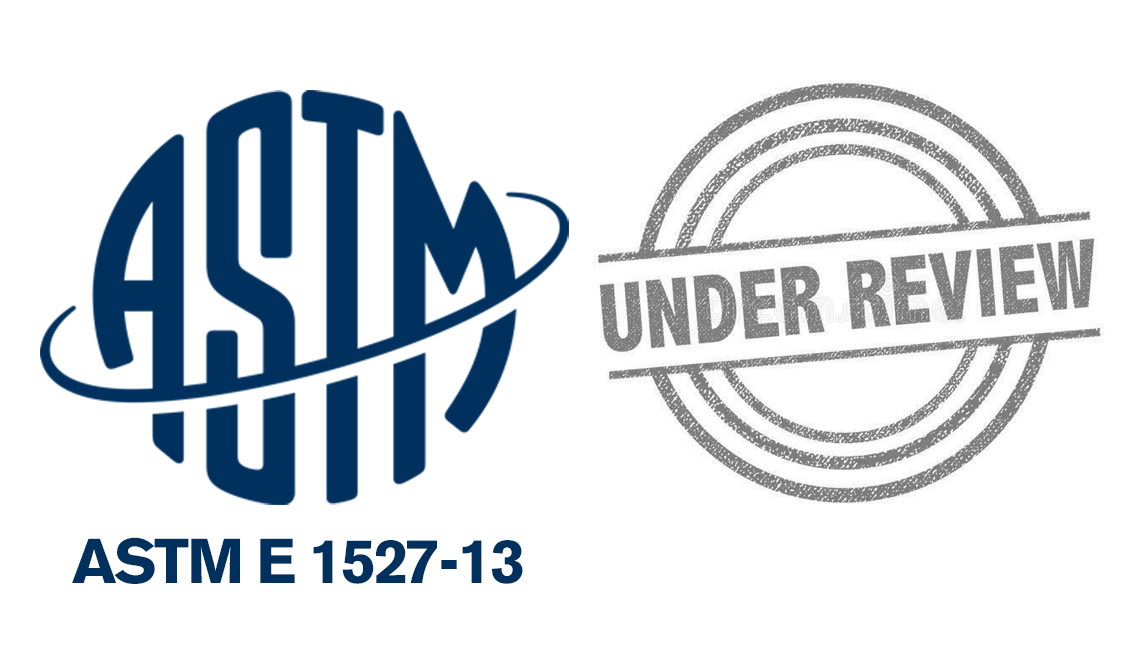Upcoming Changes to the ASTM E 1527-13 ESA Standard Practice

By Nick Albergo
August 19, 2019
There are significant changes being considered by members of the ASTM Committee E50 on Environmental Assessment, Risk Management and Corrective Action. The Committee, first formed in 1990, is responsible for the Phase I Standard among many others. Consistent with ASTM by-laws, the Phase I Standard is now due for review and re-approval.
Some modifications to the Standard simply address updates to the Brownfields provisions of CERCLA, passed as part of the fiscal year 2018 Omnibus Bill. Among the relevant provisions are:
- Local or state governments that take control of a contaminated site no longer has to be an “involuntary” acquisition;
- Liability relief is now available for Alaska Native Villages and Native Corporations for a facility received under the Alaska Native Claims Act, as long as the entity did not cause or contribute to the release of a hazardous substance from the facility;
- The Bona Fide Prospective Purchaser definition was amended to include language related to those who have tenancy or leasehold interests in the facility; and
- Publicly-owned sites acquired prior to January 11, 2002 can apply for assessment and remediation grants as long as the entity is not responsible for the contamination.
Some of the proposed changes involve updates such as that associated with Records Review. In lieu of specially defining titles to State and Federal databases, the Committee is considering moving towards simply discussing “Lists” of publicly available, practically reviewable and reasonably ascertainable databases.
Some of the proposed changes involve “clarification” of existing definitions/concepts. For example:
- Clarifying the terms “facility” (associated with records reviews), “site” (associated with the various task requirements of the assessment such as reconnaissance) and “property” (associated with the specific subject of the assessment). Currently, these terms are often used interchangeably and create confusion;
- Clarifying “adjoining properties” to observe and note relevant features that may have abutted the Property such as borrow pits, historical filling, agricultural use, rail corridors and dump sites, but are now under public thoroughfares and likely missed:
- Clarifying what makes a Data Gap “significant,” as such have specific reporting requirements;
- Strengthening the discussion of what defines a “finding” and how “opinions” are generated; and
- Revising Section 12 of the Standard to address the confusion created by the concept of an “Opinion regarding additional investigation.”
Some of the proposed changes are in response to User demands and involve strengthening the requirements that must be incorporated into the opinions regarding a finding and conclusion of a “Controlled Recognized Condition” and “Historical Recognized Condition.” For example:
- Should a finding and conclusion of a CREC include an Environmental Professionals’ opinion regarding whether (or not) the past release continues to be satisfied by the institutional or engineering control;
- Should a finding and conclusion of a HREC include an Environmental Professionals’ opinion regarding whether (or not) there is adequate information to confirm the adequacy of a self-directed cleanup in the context of a REC; and
- Should the viability of ESAs be lengthened and if so, what are the requisite tasks that must be performed including the fundamental concept of what the User “knows” or “should know” based on more recent site developments.
This of course will often require a level of academic training and professional experience that may not be fully covered by the existing definition of an Environmental Professional. In response, the Committee is considering introducing the concept of “Responsible Charge” that codifies the responsibilities for the EP who assumes direct control and supervision of the product, even if the work was largely performed by an EP who may not have such background.
Finally, the Committee is entertaining some conceptual challenges brought on by emerging contaminants such as Per- and polyfluoroalkyl substances (PFAS), a group of man-made chemicals that includes PFOA, PFOS, GenX, and many other chemicals. Such chemicals have been manufactured and used in a variety of industries around the globe, including in the United States, since the 1940s. These chemicals are very persistent in the environment and in the human body and can be found in food, commercial household products, the workplace, drinking water, and living organisms.
Although CERCLA does not list such chemicals as “Hazardous Substances,” the Committee does recognize (as it did for petroleum products) that States and jurisdictions have differing definitions for “release” or “hazardous substances” just to name a few. Thus, the importance of the CERCLA Amendments that confronted the concept of “good commercial and customary practice” may come into play where the local practices demand such (for example searching for cattle dip vats in Florida).
These are just some of the issues being addressed by the Committee and, NOTHING has been finalized. None the less, you can expect a new Standard within the next 8 months.
Nick Albergo is the former ASTM E50.02 Vice Chair on Environmental Assessment, Risk Management and Corrective Action and helped shape the rules and regulations that are now in common use throughout the United States, as one of the original authors of the ASTM E 1527, 1528 and E 1903 Standard Practice for Environmental Site Assessments.
